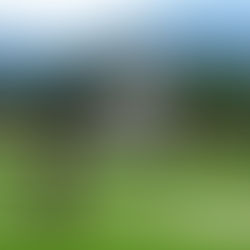No Mow May!
- May 4, 2023
- 2 min read
Updated: May 18, 2023

*Photo by Chang Qing on Unsplash
Post written by Marikay Shellman, Bayfield, CO (edited for length and clarity)
Here’s a simple act for May: no mowing your lawn for a whole month! “The goal of No Mow May is to allow grass to grow for the month of May, creating habitat and forage for early season pollinators. This is particularly important in urban areas where floral resources are often limited” (Bee City USA). No Mow May is a catchy phrase, however it depends upon where you live. It might make more sense to have a No Mow April or No Mow Spring, whenever you notice the daffodils popping up & robins eating worms, the native bees and bumblebees are beginning to emerge and need food and cover from the chilly nights. The start of growing season is a critical time to give lawn flowers a chance to bloom and provide nectar and pollen for these early emerging bees and pollinators to feed themselves & their offspring.
Don’t jump into Spring Garden cleanup. Leave those leaves that you didn’t rake last Fall as they provide much needed protection from the Spring winds and lingering frosts for both plants and invertebrates. Many bees & butterflies don’t emerge until late May. Notice chrysalides still clinging to the dried standing plant material you left last season. Longer grass can provide shelter for many invertebrates, and several species including ground beetles and some butterflies (fiery skipper and sachem) use grasses as host plants (Xerces Society).
We need to re-think the American lawn. 40 million acres, 2% of the land in US, are covered in lawns which are mowed, raked, fertilized, weeded, chemically treated, and watered. These neatly kept monoculture lawns provide little food or habitat for native bees and pollinators, and the pesticides & lack of habitat are contributing to one in four bee species being on the verge of extinction. “Weed and Feed” products contain toxins such as neonicotinoid insecticides, deadly to bees & other pollinators.
Balancing the urge to have a lawn for playing with your dog and wanting to create habitat for pollinators, try mowing a smaller portion of your lawn and leaving border areas of bunch grasses and shrubs. You can always make your patio or balcony more pollinator-friendly by planting pesticide-free native plants. If your neighbors or HOA are wondering about your long grass, print out free NO MOW MAY sign available from https://beecityusa.org>no-mow-may. Office Depot will laminate them, “outside” thickness, for a minimal charge. Involve your community members and city officials or HOA board members by asking them to adopt a No Mow Spring policy.
There are many ways to help out your native pollinators in the springtime, but participating in No Mow May is a super simple way that you can have a big impact with little effort!












